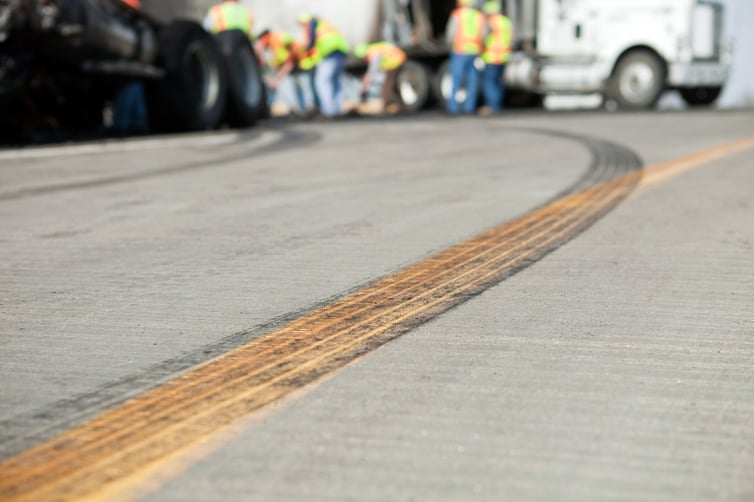
Critical crashes typically result in severe losses and can be catastrophic for everyone involved. Preventing critical crashes requires drivers to recognize the hazards that increase the odds of a crash, know the defense, and to react properly. Read the information below, and ask yourself how you can improve your vigilance and driving style
 LANE CHANGE CRASHES
LANE CHANGE CRASHES
A lane change crash occurs when a driver moves into an adjacent lane and strikes another vehicle or object.
Contributing factors: Making frequent or abrupt lane changes. Blind spots. Mismanaging the space around the truck. Failing to use turn signals. Failing to use mirrors or to keep mirrors clean or adjusted properly.
Crash-prevention techniques: Stay in one lane as much as possible. Make quick glances to mirrors. Keep mirrors clean and properly adjusted. Use the “lean and look” method to monitor blind spots. When exiting, get in the exit lane well in advance and use the turn signal
 LOSS OF CONTROL CRASHES
LOSS OF CONTROL CRASHES
Loss of control crashes include jackknifes, lane departures (when one or more tires are off the road surface), rollovers, and steer tire blowouts resulting in losing control of the vehicle and causing a crash.
Contributing factors: Losing traction due to wet or dry surfaces (jackknifes). Driving while distracted (lane departures). Traveling too fast on a ramp or curve (rollovers). Striking a pothole (steer tire blowout).
Crash-prevention techniques: Conduct pre-trip inspections. Observe the proper speed for conditions. Avoid distractions. Be attentive to the road ahead. Know how to straighten the truck if a jackknife occurs.
 REAR END CRASHES
REAR END CRASHES
A rear-end crash is when a vehicle does not stop in time to avoid hitting the back of the vehicle directly in front.
Contributing factors: Following too closely or tailgating. Speeding. Driving too fast for the conditions. Driving while distracted. Improper brake adjustment. Insufficient tire tread depth. Slippery surfaces.
Crash-prevention techniques: Maintain proper following distance. Avoid distractions. Drive 2-3 MPH below the flow of traffic, not to exceed the speed limit. Adjust speed to the conditions. Maintain equipment properly.
 RUN UNDER CRASHES
RUN UNDER CRASHES
A run under crash – including a right-turn squeeze collision – is when a vehicle impacts the side of the truck and runs under the trailer.
Contributing factors: Blocking oncoming traffic. Missing reflective tape or malfunctioning trailer lights. Making U-turns or wide right turns. Misjudging the speed of oncoming traffic when turning.
Crash-prevention techniques: Yield to oncoming traffic. Do not make U-turns. Use traffic control assistance and a spotter if required to back up across travel lanes. Keep the rear of the trailer close to the curb when making a right- hand turn. Time left turns so the trailer does not block intersections.
Note: These lists are not intended to be all-inclusive.
This material is intended to be a broad overview of the subject matter and is provided for informational purposes only. Great West Casualty Company does not provide legal advice to its insureds or other parties, nor does it advise insureds or other parties on employment-related issues, therefore the subject matter is not intended to serve as legal or employment advice for any issue(s) that may arise in the operations of its insureds or other parties. Legal advice should always be sought from legal counsel. Great West Casualty Company shall have neither liability nor responsibility to any person or entity with respect to any loss, action, or inaction alleged to be caused directly or indirectly as a result of the information contained herein.Reprinted with permission from Great West Casualty Company.

